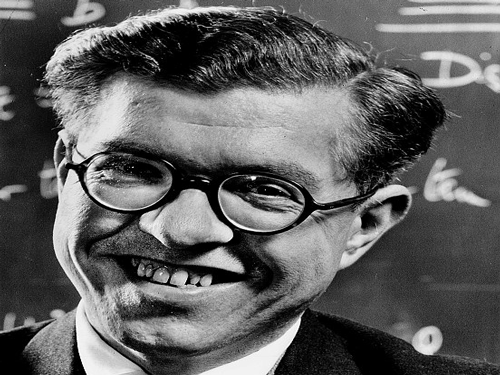
Sir Fred Hoyle, one of the leading astrophysicists of 20th century, was born on June 24, 1915. Most popular for rejecting the Big Bang Theory of the universe, Fred died in 2001, at the age of 86, but not without contributing significantly to the field of science. His seminal contribution has been in elucidating how the element carbon can be synthesised in thermonuclear reactions in the cores of stars (including the Sun), once they have converted most of the hydrogen in their core to helium.
It is evident that stars like the Sun shine by converting hydrogen to helium in
thermonuclear reactions in their core at temperatures of several million degrees. Two protons fuse to form deuterium, deuterium reacts with a proton to form He3 and so on till He4 is formed. The Sun converts 564 million tons of helium every second and the amount of hydrogen in the core would enable the Sun to shine for another six billion years.
Stellar nucleosynthesis
But what happens to all the helium? The core would now contract, heating to 200 million degrees. The helium nuclei can now fuse to form carbon and oxygen. But here, nuclear physicists and astronomers recognised a well-known bottleneck which could prevent the reactions going beyond helium. The beryllium-8 (Be8) nucleus which would form from the fusion of two helium-4 nuclei is extremely unstable, decaying in a zeptosecond (one trillion of a nano second).
Thus, three helium-4 nuclei must come together to form a carbon-12 nucleus. But three body reactions are very rare and improbable. So, it looked as if carbon cannot be formed in stars. However, Fred reasoned that since biological life is essentially and universally carbon-based, carbon must be somehow synthesised in nuclear reactions in stars.
So, he worked backwards and proposed the existence of a resonant excited state in the carbon nucleus, which can speed up the nuclear reactions in the stars. He even predicted the position of this resonance and suggested that experimental nuclear physicists look for it. This aroused the interest of William Fowler and his group at Caltech. After a thorough search, they found the resonance in carbon nucleus, precisely where Fred
predicted it would be!
This boosted research in the theoretical understanding of how heavier elements (many of them crucial for the origin and evolution of life) would be created inside stars. The fortunate absence of such a resonance in the oxygen nucleus ensures that all the carbon does not become oxygen. Otherwise, we won’t have enough carbon, which by its ability to form long-chain complex molecules is crucial for living systems. Again, subtle nuclear
effects ensure that all oxygen does not go into neon. In heavier stars, the core keeps collapsing after the successive exhaustion of each of these fuels (i.e., helium, carbon, oxygen, neon, silicon etc), so that interiors of massive stars resembles an onion shell with successive burnt out layers of different heavy elements.
Fred collaborated with William and two astronomers, Margaret Burbidge and
Geoffrey Burbidge, on this topic, and they wrote a monumental paper in the journal Reviews of Modern Physics, in 1957. You may recognise this paper as the famous B2FH paper, the go-to reference for understanding how heavy elements are produced. The B2FH paper describes several process like r, s, e, p etc to understand heavy element production and abundance.
Around 1960, Fred and William explained how white dwarfs in binary systems can accrete matter from the companion star and can be pushed over the Chandrasekhar mass limit making them collapse and explode as the so-called Type I a supernova. In this literal celestial nuclear bomb, the entire white dwarf matter could be converted to iron and the star shattering into smithereens would seed interstellar clouds with this iron. Thus iron, crucial for life is more abundant here than many other elements, (blood hemoglobin for example). Exploding white dwarfs are a rich source of iron in the universe.
But let us come to the interesting part of Fred’s illustrious scientific career: his rejection of the Big Bang model. To counter the universally-accepted theory of how the universe began with a small singularity, then inflated over the next 13.8 billion years to the cosmos we know today, Fred proposed the Steady State Theory (SS) and even wrote many influential papers on it with Hermann Bondi and Thomas Gold.
According to this theory, the universe appears the same at all epochs, i.e.,
although it is expanding, it does not change its appearance over time. To counter the argument that creation violated the law of conservation of energy, Fred pointed out that in the big bang model, all matter was created in an instant at the so-called singularity and this was much bigger violation of energy conservation.
This problem has still not been adequately resolved even in the inflation models. The discovery of Cosmic Micro Wave Background (CMBR) in 1965 was a huge blow to the SS theory, which had no easy way to generate such a background and was thus discarded.
All in all, Fred was a prolific populariser of science and his work of science fiction, Black Cloud, remains a classic read to this day.